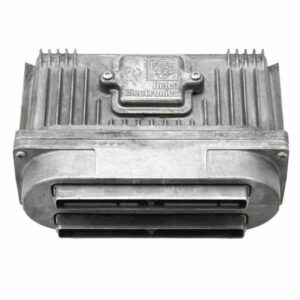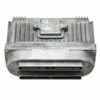Restore Peak Performance to Your 1997 GM Vehicle
Is your 1997 Pontiac Trans Sport or another GM vehicle from that era running rough, stalling unexpectedly, or showing a persistent Check Engine Light? These are classic signs of a failing Powertrain Control Module (PCM). As a technician with over two decades of experience, I’ve seen how a faulty PCM can cause a cascade of frustrating issues, from poor fuel mileage to a no-start condition. This isn’t just an inconvenience; it’s a reliability problem. This replacement 1997 Trans Sport PCM is the definitive solution to get your vehicle back on the road, running as the factory intended.
The PCM is the brain of your vehicle’s engine and transmission, managing everything from fuel injection and spark timing to transmission shift points. When it fails, the symptoms can be confusing and intermittent. Instead of spending hundreds at a dealership for diagnostics and programming, we provide a direct, reliable fix. We flash this module with the latest official GM software updates, specifically programmed to your vehicle’s unique Vehicle Identification Number (VIN). This ensures perfect compatibility and function right out of the box, eliminating guesswork and additional costs.
From the Diagnostic Bay: The Intermittent Stall
I remember a 1997 Pontiac Bonneville that came into the shop with a complaint that stumped two other mechanics: it would stall randomly at stoplights, but only after it was fully warmed up. No codes were stored. We checked fuel pressure, vacuum lines, and sensor data—everything looked perfect. On a hunch, I monitored the 5-volt reference signal from the PCM to the MAP sensor. For an hour, it was solid. Then, for just a split second, it dropped to zero, and the engine died. The PCM had an internal thermal failure. Replacing it with a pre-programmed unit like this one solved the problem instantly. It’s a reminder that even without codes, the PCM can be the hidden culprit.
Is Your Vehicle Showing These Signs of PCM Failure?
A failing engine computer can manifest in numerous ways. If you’re experiencing any of the following, a faulty PCM could be the cause:
- ✔ Persistent Check Engine Light (CEL)
- ✔ Stored diagnostic trouble codes (DTCs) like P0601 (Internal Control Module Memory Check Sum Error)
- ✔ Engine stalling, stumbling, or rough idling
- ✔ Failure to start or intermittent starting problems
- ✔ Noticeable decrease in fuel economy
- ✔ Harsh or erratic automatic transmission shifting
- ✔ Failing a state emissions inspection
A Straightforward Guide to Installation
Installing your replacement 1997 Trans Sport PCM is a manageable job for a DIYer with basic tools. Follow these steps for a successful installation:
- Safety First: Disconnect the negative terminal from your vehicle’s battery and secure it away from the post to prevent accidental contact.
- Locate the PCM: On most of these GM vehicles, the PCM is located in the engine bay, often inside the air filter box housing for protection.
- Disconnect the Harnesses: Carefully unplug the electrical connectors from the old module. There are typically release tabs that need to be depressed. Avoid pulling on the wires themselves.
- Remove the Old Module: Unbolt the old PCM from its mounting bracket or housing and remove it from the vehicle.
- Install the New Module: Seat your new, pre-programmed PCM into the mounting location and secure it. Reconnect the electrical harnesses, ensuring they click securely into place.
- Reconnect the Battery: Reattach the negative battery terminal. Your vehicle is now ready to start. In some cases, a security relearn procedure may be necessary, which typically involves cycling the key.
Verified Vehicle Compatibility
This module, part number 16218070 (also fits 16217058), is a direct-fit replacement for a wide range of 1997 General Motors vehicles. Please confirm your model and engine below:
- ✔ Achieva 97 – Electronic Control Module; 6-191 (3.1L)
- ✔ Bonneville 97 – Electronic Control Module; (6-231, 3.8L), w/o supercharged option
- ✔ Century 97 – Electronic Control Module; (6-191, 3.1L)
- ✔ Cutlass 97 – Electronic Control Module; Supreme
- ✔ Eighty Eight 97 – Electronic Control Module; (6-231, 3.8L), w/o supercharged option
- ✔ Grand Am 97 – Electronic Control Module; 6-191 (3.1L)
- ✔ Grand Prix 97 – Electronic Control Module; 6-191 (3.1L) or 6-231 (3.8L), w/o supercharged option
- ✔ LeSabre 97 – Electronic Control Module; (6-231, 3.8L)
- ✔ Lumina Car 97 – Electronic Control Module; 6-191 (3.1L)
- ✔ Monte Carlo 97 – Electronic Control Module; 6-191 (3.1L)
- ✔ Regal 97 – Electronic Control Module; (6-231, 3.8L), w/o supercharged option
- ✔ Silhouette 97 – Electronic Control Module; (6-207, 3.4L)
- ✔ Skylark 97 – Electronic Control Module; 6-191 (3.1L)
- ✔ Trans Sport 97 – Electronic Control Module; (6-207, 3.4L)
- ✔ Venture 97 – Electronic Control Module; (6-207, 3.4L)
Frequently Asked Questions about this 1997 Trans Sport PCM
Frequently Asked Questions
How do I provide my VIN for programming?
After you complete your purchase, you will need to send us your 17-digit VIN. You can typically add it as a note during checkout or reply to your order confirmation email. We cannot ship the module until we receive your VIN.
Is this part difficult to install myself?
For most individuals with basic mechanical skills, this is a straightforward installation. It’s a plug-and-play part since we handle the programming. You’ll only need common hand tools to access and swap the module.
What if my original part number is 16217058?
This module, 16218070, is a fully compatible and correct replacement for part number 16217058. It will function identically once programmed to your vehicle’s VIN.
Will I need to do anything after installation?
Because this PCM is pre-programmed to your VIN, no further dealer programming is required. Some GM vehicles may require a simple security relearn procedure, which can be done without special tools and typically involves cycling the ignition key. Instructions can be easily found online for your specific model.
What is the benefit of getting the newest GM updates?
Over the years, manufacturers release software updates to address common issues, improve transmission shifting, and enhance engine efficiency. By flashing your module with the latest software, you’re getting a part that performs better than the original one that came from the factory.



